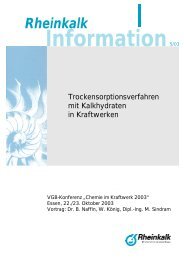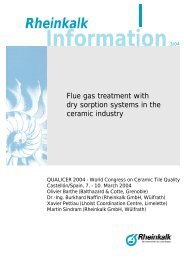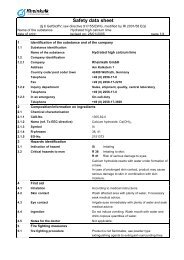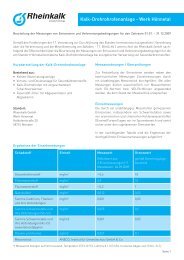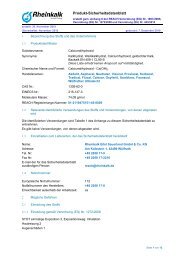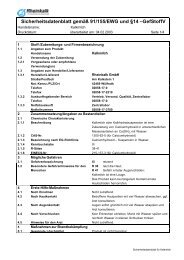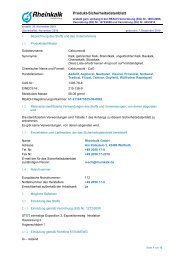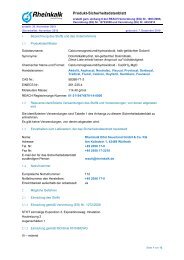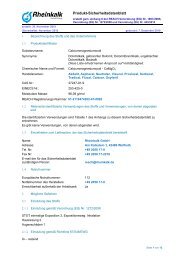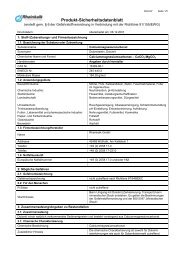SO - Rheinkalk
SO - Rheinkalk
SO - Rheinkalk
You also want an ePaper? Increase the reach of your titles
YUMPU automatically turns print PDFs into web optimized ePapers that Google loves.
The use of products that are optimally customised to the process provide particular<br />
advantages for the operator of semi-dry and dry processes. Therefore, highly<br />
reactive hydrated lime (Spongiacal ® ) is generally used since this<br />
• minimises the consumption of operating materials,<br />
• allows a safe compliance with mandatory limiting values,<br />
• reduces the amount of residual waste (requirement to minimise residual waste!).<br />
In the low-temperature range, the highly reactive hydrated lime products<br />
(WÜLFRAsorp ® A and Spongiacal ® ) have been used successfully for some time. An<br />
important further development was the combination of semi-dry and dry process<br />
steps with high porous products (MCD process).The medium temperature range<br />
offers very good application conditions for the use of special hydrates, particularly<br />
those to remove <strong>SO</strong>2. For example, in the glass industry, flue-gas cleaning has been<br />
very successful using WÜLFRAsorp ® A at 350 – 500 °C 4 . In the high-temperature<br />
range at approx. 850 –1000 °C, products with high surface areas that were specially<br />
developed for flue-gas cleaning (e.g. WÜLFRAsorp ® A) have also been used<br />
successfully.<br />
WÜLFRAsorp ® A Spongiacal ®<br />
WÜLFRAsorp ® A<br />
NHL / Milled Limestone<br />
~ 1200 - 1000 °C<br />
~ 1000 - 850 °C<br />
<strong>SO</strong>2 NHL<br />
~ 850 - 450 °C ~ 300 - 220 °C ~ 220 - 80 °C<br />
~ 450 - 300 °C<br />
<strong>SO</strong> 2 + HCl<br />
WÜLFRAsorp ® D SP<br />
NHL<br />
<strong>SO</strong> 2 + HCl<br />
Max. 180°C<br />
PCDD/DF + Hg<br />
Graph 4: Temperature application range of lime based products<br />
In addition to the temperature a number of other factors influence the removal of<br />
pollutant gases. They can be summarised under the headings gas properties (given),<br />
process engineering (can be influenced) and adsorbent (can be influenced). The<br />
influence of temperature for the use of hydrated lime in semi-dry and dry process is<br />
discussed here, in particular.<br />
Results and operating experience are discussed on the basis of practical examples<br />
from the field of thermal waste treatment.<br />
4




